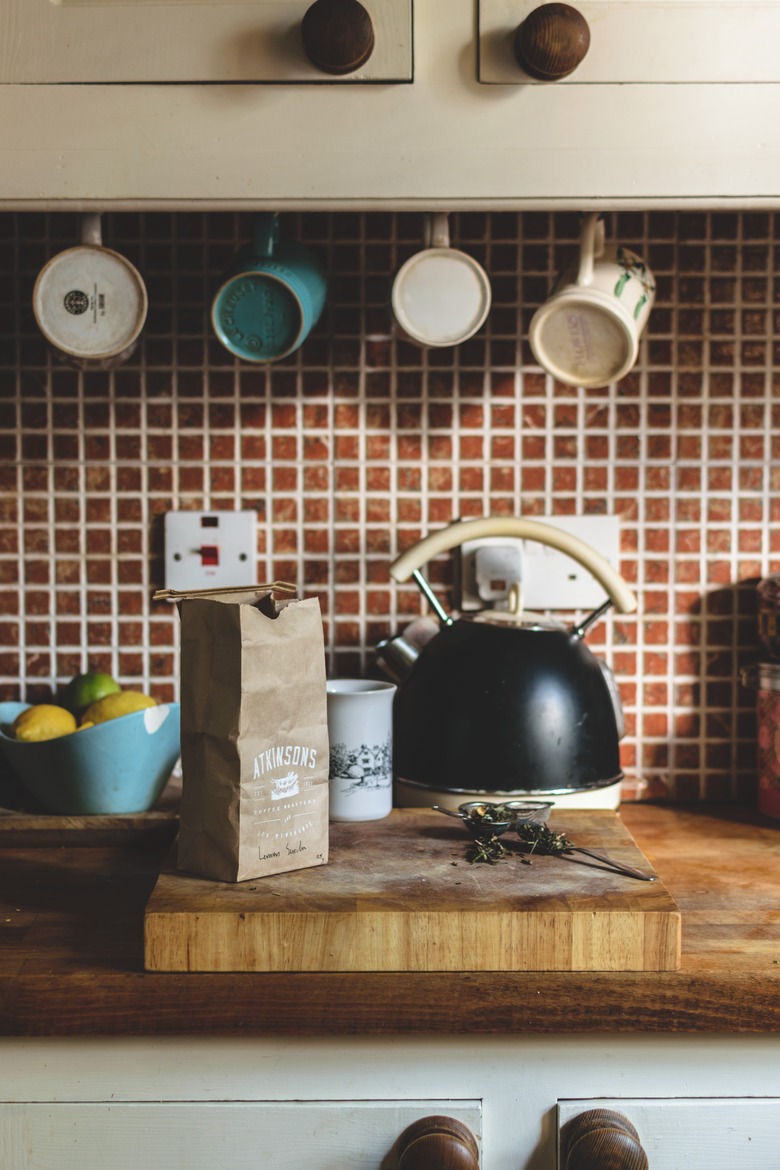How To Remove Grout Stains
Glazed ceramic and porcelain tiles are nonporous, but the same isn't necessarily true for the grout between them, Cementitious grout, which is the type most tile installers use, is basically Portland cement and sand. It provides plenty of surface area for mold to grow and oil, soap and mineral deposits to create stains, even when sealed. If you like to avoid tough stain removal jobs by cleaning often, you may need nothing more than water and a brush to keep your grout clean. Deeper stains take a while to develop, and getting rid of them is more difficult. For these, baking soda, peroxide and steam are a grout cleaner's best friends.
What About Vinegar or Bleach?
What About Vinegar or Bleach?
Reputable cleaners extol the benefits of vinegar for practically every cleaning job, but there's a good reason to think twice before using it on cementitious grout. The main ingredient in grout — Portland cement — is alkaline in nature and reacts with acids such as vinegar. Repeated use can degrade the grout, dissolve it or even make the staining worse by dissolving dirt and binding it with the cement. None of this is likely to happen if you use vinegar once or twice on your grout, but it's probably best to stay away from it altogether unless you need to remove hard-water deposits. For these, spot-clean with a 50-50 vinegar/water solution.
Bleach is another universally recommended product that you should use sparingly, if at all. It can definitely kill mold, but it has a high surface tension that prevents it from penetrating porous materials like grout. It gets rid of mold on the surface but won't kill the roots, and the mold will grow back. Bleach is corrosive, so the price for using it repeatedly is degradation of the grout.
What? No Soap Either?
What? No Soap Either?
The Tile Council of North America advises caution when using soap, and recommends against using oil- or wax-based soaps, such as Murphy's Oil Soap or Pine-Sol. Soapy products leave a film that must be thoroughly washed off to avoid leaving a thick film that attracts dirt. Even strongly alkaline cleaners that aren't pure soaps, such as ammonia, can leave a film. There are more effective ways to clean grout, so it's best not to use soaps or ammonia. They could end up creating more work for you.
So What Do I Use?
So What Do I Use?
Here are four safe and effective ways to clean cementitious tile grout:
Water — Before reaching for any household chemical, try scrubbing your grout with clean water. In many cases, that's all you need to do to remove all the stains and mold that are causing the discoloration. You can buy a grout-cleaning brush at any hardware store, but you can also use a hard-bristle toothbrush.
Baking Soda — Stubborn stains may need more abrasive action. To provide this, make a paste of baking soda and water. Baking soda is an alkaline cleaner, so it's safe for grout, and it also deodorizes and disinfects. Spread the paste on the grout; let it sit for 5 to 10 minutes, then scrub well and rinse. Although borax doesn't have the same disinfecting and deodorizing properties, it makes a suitable substitute for baking soda.
Hydrogen Peroxide — The 3 percent peroxide you keep in your medicine cabinet is an effective bleaching agent. It can penetrate grout and reach deep stains that you can't remove by scrubbing. Its bleaching action is similar to that of sodium hypochlorite (household bleach), but it has a lower surface tension, and it won't leave a residue. Make a more effective scrubbing paste by mixing baking soda or borax with peroxide instead of water.
Steam — Steam is the nuclear option for really tough stains. You can buy small handheld steamers suitable for cleaning countertops, walls and backsplashes. When it comes to floors, buy or rent a floor steamer, which looks like a vacuum cleaner and is just as easy to operate. Steam loosens the deep stains, so you can scrub them out with water or a baking soda paste.
Stain Prevention
Stain Prevention
If your tiles are grouted with epoxy grout, you shouldn't have to worry about stains at all. You have to seal conventional cementitious grout, however, or staining will become a real problem. Acrylic or polyurethane sealers penetrate the grout to seal it from within while leaving a protective film that keeps out moisture and mold. It's a great idea to reseal the grout every few years to maintain the protection.
Even sealed grout can sustain stains, but they won't create a headache for you if you clean the grout often. A once-over with water and a scrub brush every six months or so keeps really stubborn stains from developing and eliminates the need for more aggressive cleaning techniques.
